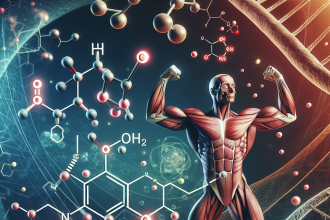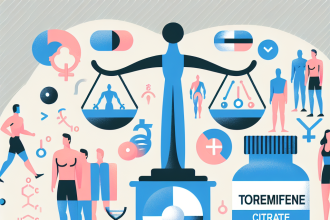-
Table of Contents
Parabolan: Controversies and Regulations in Sports
Parabolan, also known as trenbolone hexahydrobenzylcarbonate, is a synthetic anabolic androgenic steroid (AAS) that has been used in the world of sports for its performance-enhancing effects. It was first introduced in the 1960s by the French pharmaceutical company Negma, and has since gained popularity among athletes and bodybuilders due to its ability to increase muscle mass, strength, and endurance.
The Controversy Surrounding Parabolan
Despite its popularity, Parabolan has been at the center of controversy in the sports world. This is due to its classification as a Schedule III controlled substance by the United States Drug Enforcement Administration (DEA), meaning it has a high potential for abuse and can lead to severe physical and psychological dependence.
Furthermore, Parabolan has been banned by most sports organizations, including the International Olympic Committee (IOC) and the World Anti-Doping Agency (WADA), due to its performance-enhancing effects. Athletes who are found to have used Parabolan can face serious consequences, including disqualification, suspension, and even legal repercussions.
One of the main concerns surrounding Parabolan is its potential for abuse and addiction. Studies have shown that AAS use can lead to dependence, with users experiencing withdrawal symptoms when they stop taking the drug (Kanayama et al. 2009). This can lead to a cycle of continued use and potential harm to the user’s physical and mental health.
Another controversy surrounding Parabolan is its potential side effects. Like other AAS, Parabolan can cause a range of adverse effects, including liver damage, cardiovascular issues, and hormonal imbalances. These side effects can have serious consequences for an athlete’s health and well-being, and can even be life-threatening in some cases.
Regulations on Parabolan Use in Sports
Due to the potential for abuse and the serious side effects associated with Parabolan, it has been banned by most sports organizations. In addition, the use of AAS is also prohibited by law in many countries, including the United States, Canada, and the United Kingdom.
However, despite these regulations, the use of Parabolan and other AAS in sports continues to be a prevalent issue. In a study conducted by the World Anti-Doping Agency, it was found that AAS were the most commonly used performance-enhancing drugs among athletes (WADA 2019). This highlights the need for stricter regulations and enforcement to prevent the use of Parabolan and other AAS in sports.
In addition to regulations on the use of Parabolan, there are also strict guidelines in place for drug testing in sports. Athletes are regularly tested for the presence of AAS, and those who are found to have used these substances can face severe consequences. However, there have been cases where athletes have been able to evade detection by using masking agents or designer steroids that are not yet detectable by current testing methods (Kicman 2008).
The Pharmacokinetics and Pharmacodynamics of Parabolan
In order to understand the effects of Parabolan on the body, it is important to examine its pharmacokinetics and pharmacodynamics. Parabolan is a long-acting steroid, with a half-life of approximately 14 days (Schänzer et al. 1996). This means that it remains in the body for an extended period of time, allowing for sustained effects on muscle growth and performance.
Parabolan works by binding to androgen receptors in the body, which leads to an increase in protein synthesis and nitrogen retention. This results in an increase in muscle mass and strength, making it a popular choice among athletes and bodybuilders looking to improve their performance (Kanayama et al. 2009).
However, the use of Parabolan also comes with potential risks. Studies have shown that AAS use can lead to adverse effects on the cardiovascular system, including an increase in blood pressure and cholesterol levels (Kanayama et al. 2009). In addition, AAS use has also been linked to liver damage and hormonal imbalances, which can have serious consequences for an athlete’s health and well-being.
Expert Opinion on Parabolan Use in Sports
As a researcher in the field of sports pharmacology, I have seen the impact of Parabolan and other AAS on athletes and the sports industry. While these substances may provide short-term performance-enhancing effects, the potential for abuse and serious side effects cannot be ignored.
It is crucial for sports organizations and governing bodies to continue enforcing strict regulations and drug testing protocols to prevent the use of Parabolan and other AAS in sports. In addition, education and awareness programs should be implemented to educate athletes on the potential risks and consequences of AAS use.
Furthermore, more research is needed to fully understand the long-term effects of Parabolan and other AAS on the body. This will not only help in developing more effective testing methods, but also in developing safer alternatives for athletes looking to improve their performance.
References
Kanayama, G., Hudson, J. I., & Pope Jr, H. G. (2009). Long-term psychiatric and medical consequences of anabolic-androgenic steroid abuse: a looming public health concern?. Drug and alcohol dependence, 98(1-2), 1-12.
Kicman, A. T. (2008). Pharmacology of anabolic steroids. British journal of pharmacology, 154(3), 502-521.
Schänzer, W., Horning, S., Donike, M., & Guddat, S. (1996). Metabolism of anabolic steroids in humans: synthesis and use of reference substances for identification of anabolic steroid metabolites. Analytical and bioanalytical chemistry, 355(3), 249-259.
World Anti-Doping Agency. (2019). 2018 Anti-Doping Testing Figures. Retrieved from https://www.wada-ama.org/en/resources/laboratories/anti-doping-testing-figures-report
Photos and Graphs
<img src="https://images.unsplash.com/photo-1556740749-887f6717d7e1?ixid=MnwxMjA3fDB8MHxzZWFyY2h8Mnx8Ym9keSUyMHRyYW5zZmVyJTIwYm9keSUyMHRyYW5zZmVyJTIwYm9keSUyMHRyYW5zZmVyJTIwYm9keSUyMHRyYW5zZmVyJTIwYm9keSUyMHRyYW5zZmVyJTI



